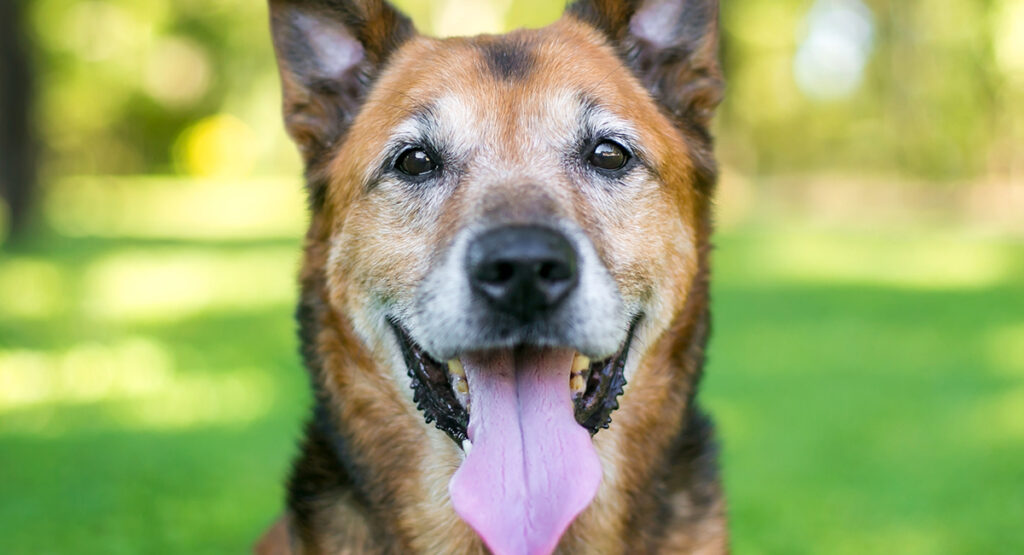
A German Shepherd mix is any dog with one German Shepherd parent and one parent from another pure breed. Or they are a second generation Shepherd mix, so their parents or possible grandparents are a combination of a German Shepherd and another dog breed. The aim behind mixing a German Shepherd with another dog is often to add a certain look to their distinctive temperament, to put a full German Shepherd into a smaller more manageable body, or to keep the look but make their temperament a little more friendly and sociable.
Contents
German Shepherd mix breeds are active, intelligent, affectionate and easy to train. They come in a huge range of weights and heights depending on the breed that a purebred German Shepherd dog was crossed with. These dogs are likely to be protective, have guarding or watchdog instincts, and do best with plenty of socialization.
Popular German Shepherd Mixes
- Shepsky
- Golden Shepherd
- Sheprador
- German Sheppit
- Corman Shepherd
- Shepweiler
- Shollie
- German Australian Shepherd
- Shepadoodle
- Doberman Shepherd
- Chihuahua Shepherd
- Beagle Shepherd
- Great Shepherd
- Malinois X
- German Shepherd Heeler
- Shepra Chow
- Germanees
- Akita Shepherd
- Boxer Shepherd
- Shollie
- German Pomeranian
- Dachshund Shepherd
- Shug
- German Shepherd Terrier Mix
- Shepherd Inu
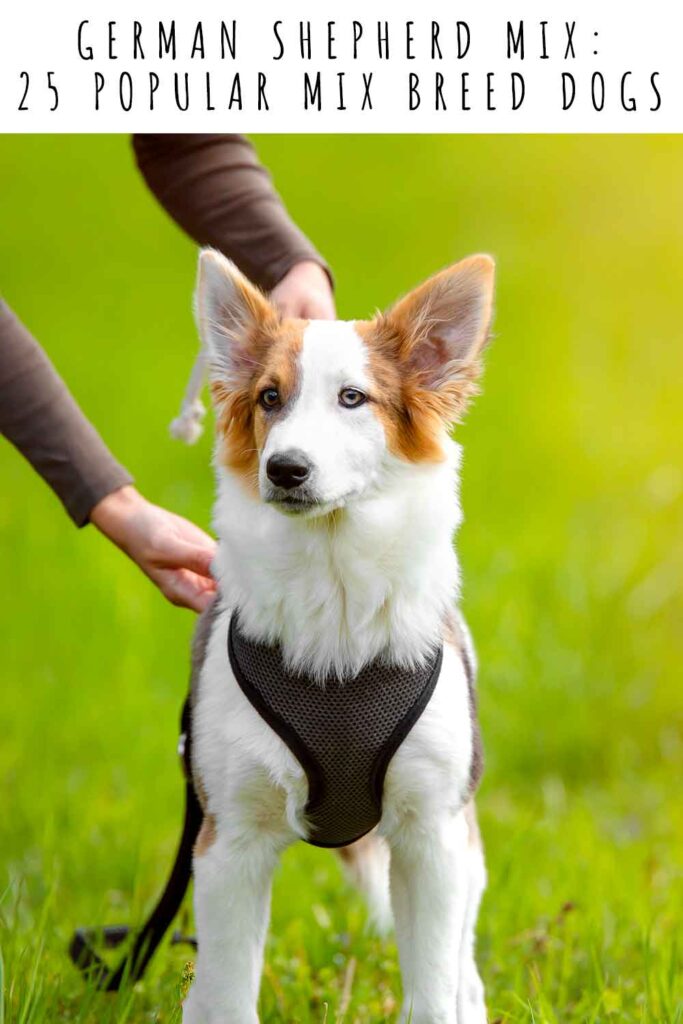
German Shepherd Mix Breeds
It’s important to remember that mixed breeds can be quite unpredictable. Some may be more like their German Shepherd parents, and others may be more like the other breed used. The traits they inherit will be completely random, so make sure you’re happy with absolutely any combination!
1. Shepsky

Affectionately known as the Gerberian Shepsky, the German Shepherd Husky mix usually weighs over 40lb once fully grown and comes with a thick double coat.
A few even have striking blue eyes, but this trait isn’t guaranteed! This mix will be intelligent, loyal, and may be quite vocal. If you enjoy grooming and want a largish dog with a wolf like appearance, this might be the pet for you.
2. Golden Shepherd
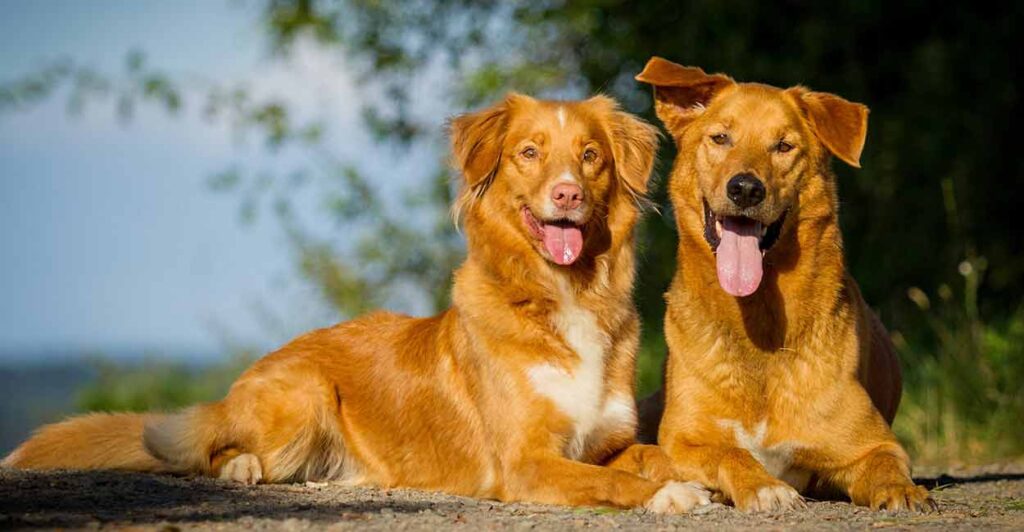
The German Shepherd Golden Retriever mix or Golden Shepherd makes an intelligent, and loyal family pet.
Mixing a herding breed with a sporting breed often produces a dog that has the potential to be both co-operative and trainable. Golden Shepherd personality may lean towards the friendly nature of the Golden Retriever or the more reserved nature of the GSD.
3. Sheprador

The beautiful dog above is a German Shepherd Lab mix also known as a Sheprador or Labrashepherd. These mixes can make energetic and friendly companions.
As another dog with a thick double coat, the Sheprador is a 50lb plus shedding breed that will put your vacuum cleaner to the test.
4. German Sheppit

Pitbull mixes are likely to be loyal, powerful short coated dogs weighing upwards of 30lbs.
Any of the 5 Pitbull breeds can be used for this mix. But, the American Pitbull Terrier is the most common candidate. Both breeds have guarding tendencies and this is a cross that needs to be considered with care.
5. Corman Shepherd

Both the Corgi and the GSD are dogs bred to work with livestock. The Corgi with cattle, and the Shepherd with sheep. Both are intelligent breeds so Corgi German Shepherd mixes should have a lively mind.
There are some serious health issues to consider though. Corgis suffer from back problems due to their shortened legs, and most health experts agree that passing on the gene for dwarfism isn’t a great idea.
6. Shepweiler

A mix with a variety of different names from Shottie to Shepweiler, Rottie Shepherd and more. This is a big dog, weighing upwards of 50lbs, with a big heart.
This is another mix between two guarding breeds. So, if you buy German Shepherd mix puppies with one Rottweiler parent you’ll need to be diligent about socialization. Obedience training is also a must.
7. Shollie

A mix between a sheepdog and another sheepdog means a very clever pup! Herding breeds are easy to train but can be reserved with strangers and demanding.
The Shollie is likely to have plenty of energy. So, this breed isn’t a great choice for families that want a lapdog!
8. German Australian Shepherd

The German Shepherd Australian Shepherd mix is another popular cross between two herding breeds.
In common with most sheepdogs, the German Australian Shepherd is intelligent and loyal. Many German Australian Shepherds will have very pretty coats and weigh between 30-50lbs.
9. Shepadoodle
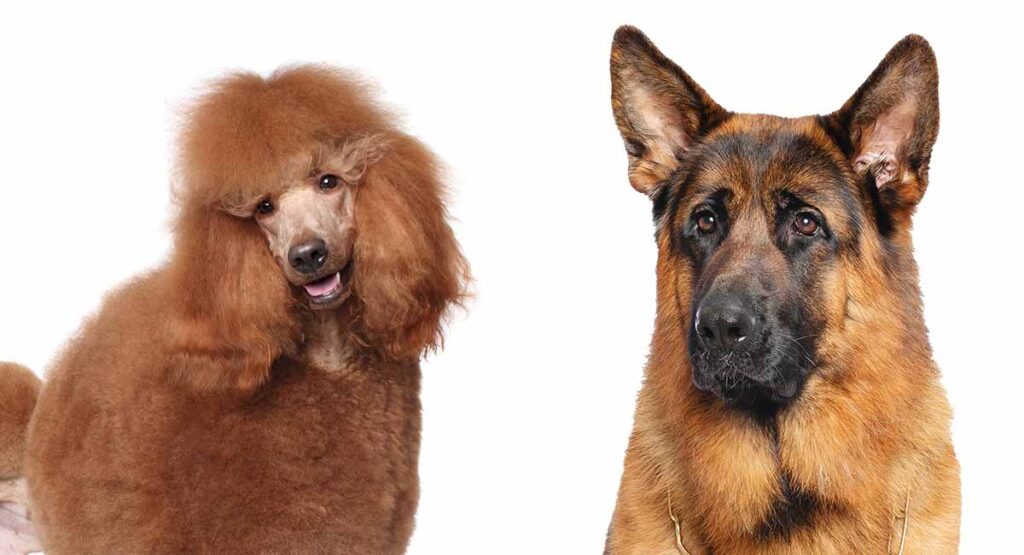
Poodle mixes are extremely popular, in part due to their cute appearance. And partly because some people with allergies find their curly coats easier to live with. Not all poodle mixes are hypoallergenic though, so don’t rely on it!
The German Shepherd Poodle mix is also known as the Shepadoodle. The Shepadoodle’s coat can vary widely but all will need some pretty intense and regular grooming. If the mix takes more after their GSD parent, they will still shed often and need plenty of grooming.
10. Doberman Shepherd

The German Shepherd Doberman mix often has a distinctive black and tan coat. The Doberman Pinscher has naturally floppy ears and this cute look is typical of the ear type when floppy eared dogs are crossed with prick eared dogs.
Intelligent and trainable, the German Shepherd Doberman mix is likely to have strong guarding instincts.
11. Chihuahua Shepherd

The German Shepherd Chihuahua mix is usually a small to medium sized dog with a short manageable coat.
It isn’t the most common mix as there are practical challenges in mating two dogs of such different sizes!
12. Beagle Shepherd

Beagles belong to the hound group of dogs. The German Shepherd Beagle mix may be a little more challenging to train than a herding breed, but can still make a great pet.
Weighing between 20 and 50lbs this mix will usually make a medium sized, short coated dog.
13. Great Shepherd
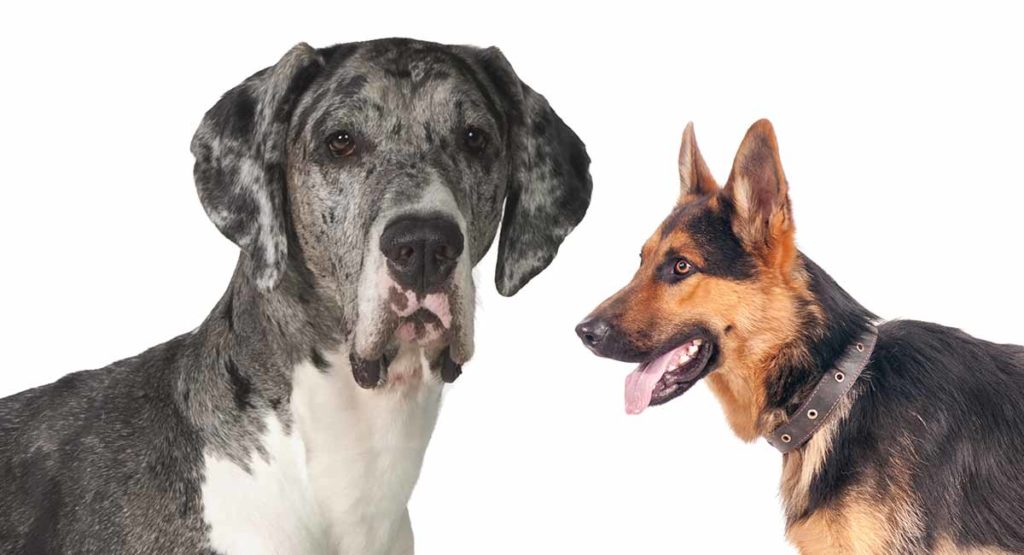
You won’t be surprised to discover that a German Shepherd Great Dane Mix is likely to be a big dog. Not all mixes are taller than the smaller parent, but most will be somewhere between the mother and father in size.
The short coated German Dane or Shepherdane will likely reach more than 60lbs in weight and need plenty of space.
14. Malinois X
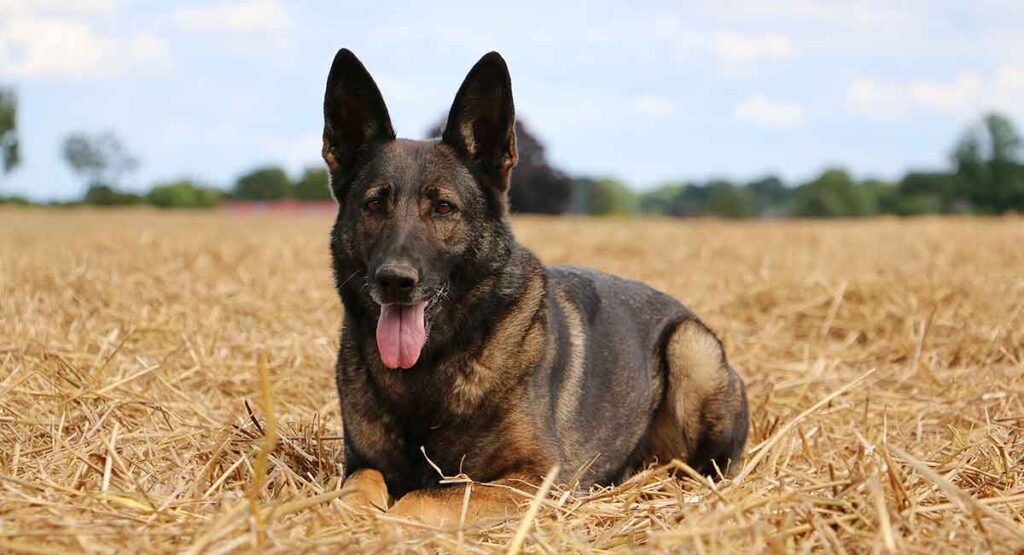
This mix is likely to be energetic, intelligent, and alert. Both parent breeds are known for being very loyal, so it’s important to socialise these puppies very well to avoid aggression.
These parent breeds are common candidates for police dogs, so they can take very well to training.
15. German Shepherd Blue Heeler Mix

The parents of the German Shepherd and Blue Heeler mix are both known for being energetic, alert, and very hardworking.
This mixed breed isn’t for the faint hearted! They need plenty of exercise to burn off all that energy, and are happiest with a job to do. You may also find this hybrid under the name Australian Cattle Dog German Shepherd mix.
16. Shepra Chow
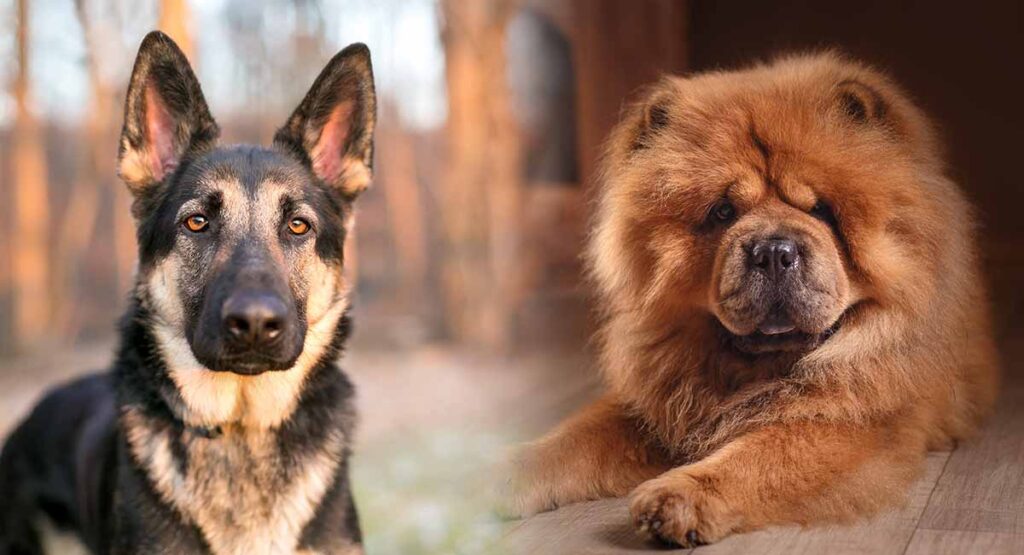
The German Shepherd Chow Chow mix is usually a medium sized dog with a lot of fur!
You’ll need to set aside a regular time slot for grooming a Chow Shepherd to avoid matted fur. An adult may weigh between 30-60lbs.
17. Germanees
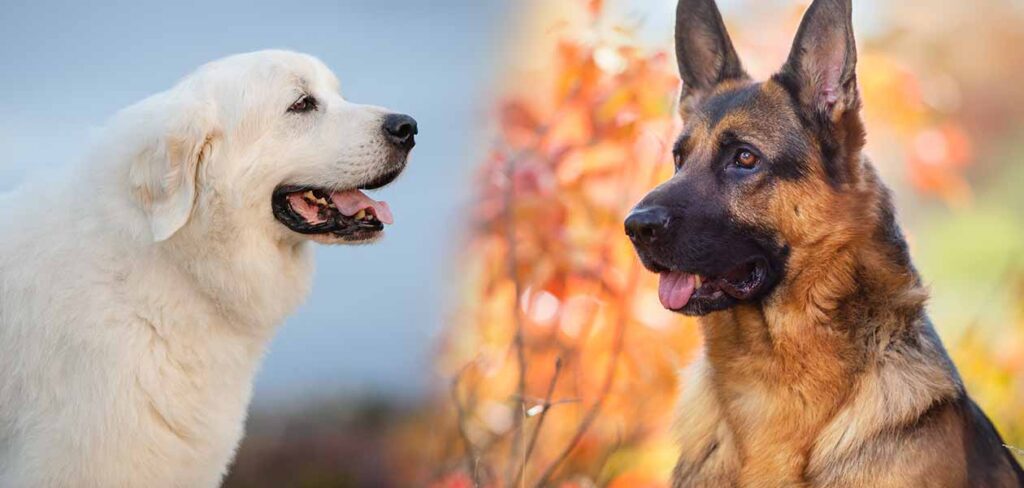
The Great Pyrenees German Shepherd mix often results in a large dog that can weigh over 100 pounds when fully grown. They will have a very fluffy coat that will need regular grooming to keep it knot free.
These dogs need plenty of socialization and training from a young age to encourage the best temperament.
18. Akita Shepherd

The Akita is a large powerful breed with strong guarding tendencies. The German Shepherd Akita mix should be well socialized as a puppy, is likely to weigh over 60lbs and have a beautiful deep dense coat.
This combination will need plenty of grooming to keep their coat healthy and clean. Plus, this is a dog that must be well trained and under the control of an adult at all times. Their size means they can easily hurt people or small animals without meaning to.
19. Boxer Shepherd
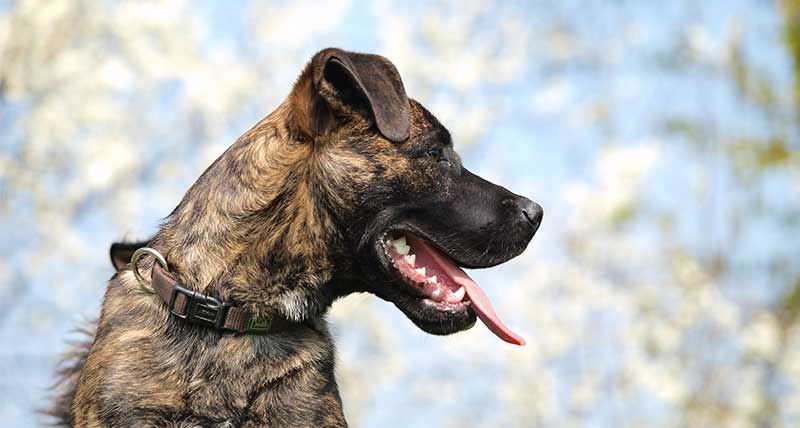
The German Shepherd Boxer mix is usually energetic, intelligent, and playful. This mixed breed puppy will usually be a shade of brown, and may have black markings.
They will have a short thick coat that needs plenty of regular grooming.
20. German Shepherd Collie

Another popular cross between two herding breeds the German Shepherd Collie mix is also a smart and trainable dog. Also sometimes known as a Collie Shepherd, these are often pretty and very agile dogs.
This mixed breed is likely to have a long, thick coat that needs plenty of regular grooming. As a very intelligent mix, they will also be happiest when they have a job to do. They can become easily bored, which may lead to destructive behaviors.
21. German Pomeranian

Pomeranian mixes are very popular at the moment. Lots of grooming needed for that pretty fur! Pomeranians are tiny dogs and like the Chihuahua cross mentioned earlier, the German Shepherd Pomeranian mix breeding poses practical problems.
Deliberate breedings are usually achieved via artificial insemination and high prices may be charged for Pomeranian mix puppies. As adults, this mix will have a thick coat, although the coloring they inherit can vary.
22. German Shepherd Dachshund Mix
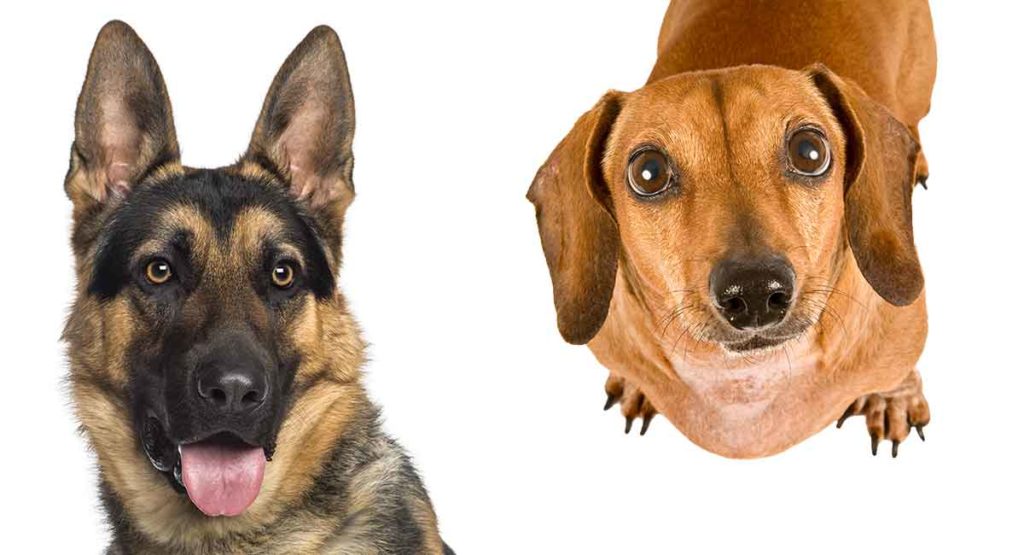
The German Shepherd Dachshund mix is a pretty unusual mix that can be quite troublesome to breed thanks to the different breed sizes. It’s likely that this hybrid will be bigger than its Dachshund parent, but it may have the shorter legs that accompany the breed.
Colors and coat types will vary depending on the type of Doxie parent you use. This mix needs to be socialized well to avoid aggression.
23. German Shepherd Pug Mix

The Pug suffers from serious health problems associated mainly with it’s flattened face. Most Pug mixes are an improvement healthwise on the Pug parent, because they have longer skulls. The same can not always be said for the other side of the family.
The German Shepherd Pug mix or Shug, is likely to be a small dog weighing under 30lbs with a short coat. If the nose is fairly short, the Shug may be prone to overheating in warm weather, as well as other issues.
24. German Shepherd Terrier Mix
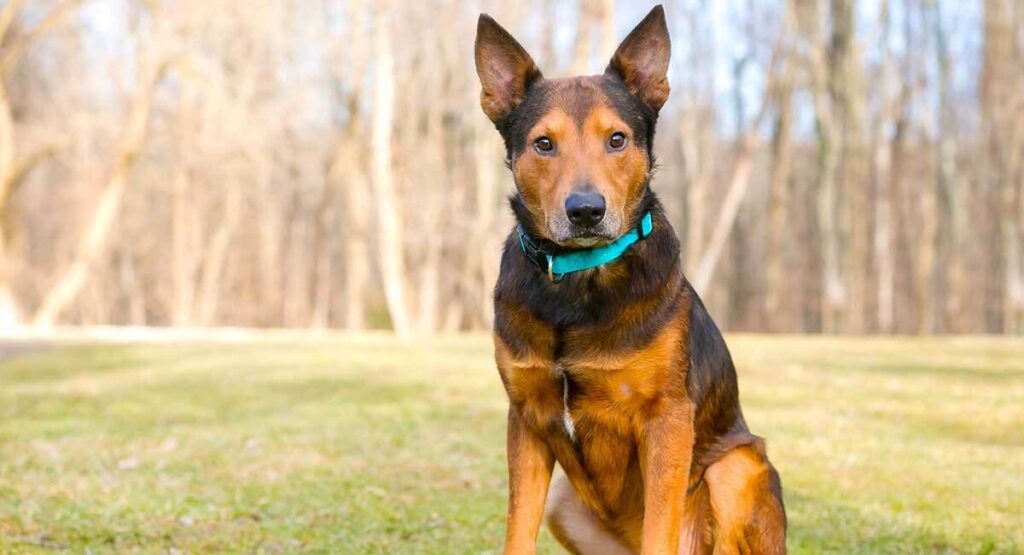
A German Shepherd Terrier mix can vary wildly from one dog to the next depending on what terrier parent you use. They vary a lot in their grooming needs, size, temperament, and more. But generally, a German Shepherd Terrier cross will be energetic, lively, and loyal.
Socialize this hybrid well. They may not get on very well with other small pets – particularly if they retain the terrier’s natural hunting instincts. The appearance of this mix will be very varied.
25. German Shepherd Shiba Inu Mix
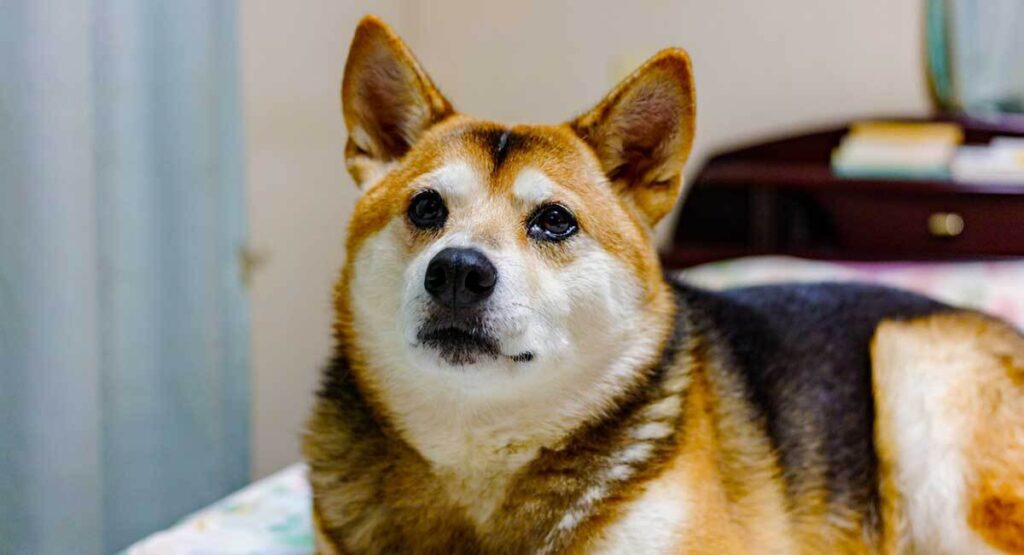
The Shiba Inu is another popular Japanese breed. A German Shepherd Shiba mix will have a dense coat that will need plenty of grooming. Both parent breeds are known to be very loyal, but can be prone to aggression. So, you must socialize this mix puppy well from a young age.
This hybrid needs plenty of exercise, and may be quite vocal. Although their coloring can vary, this mix will usually look very fox-like with a bushy tail, and triangular ears.
Rare Mixed Breeds
On top of those 25 breeds, here are some hybrids that you might not have heard of before. Although these dogs range from quirky to awesome, you’re sure to love these unlikely combos if you’re a fan of German Shepherd mixes.
- German Shepherd Wolf Mix
- Shar Pei Shepherd Mix
- German Shepherd Bichon Mix
- Maltese German Shepherd
- Saluki German Shepherd
- German Shepherd Coyote Mix
1. German Shepherd Wolf Mix
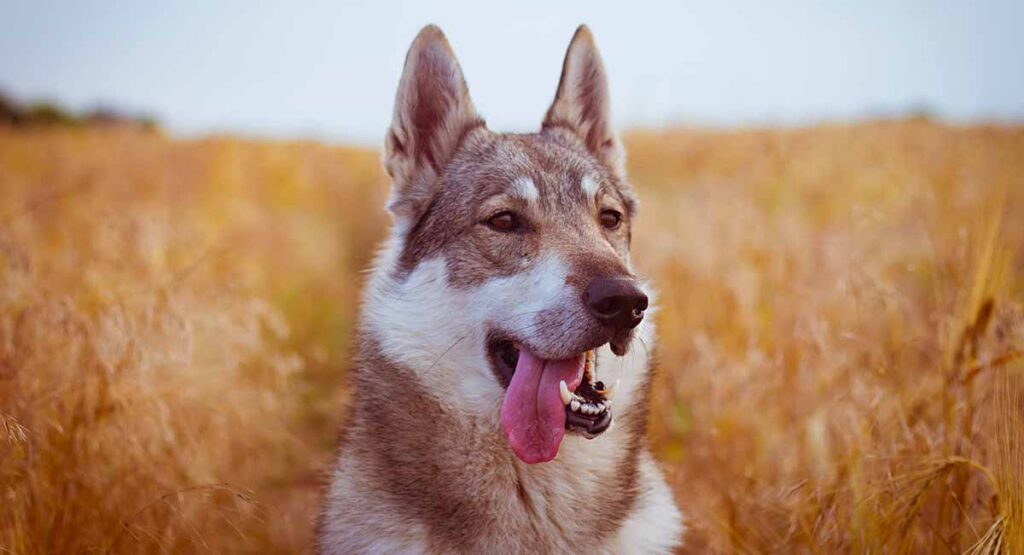
The German Shepherd wolf hybrid is also known as the Czechoslovakian Wolfdog. Wolf hybrids are certainly very beautiful. They are also controversial, and can be dangerous, accounting for a disproportionate amount of fatal attacks on humans. In some regions it is illegal to keep one. Do check out our guide before you buy!
2. Shar Pei German Shepherd Mix
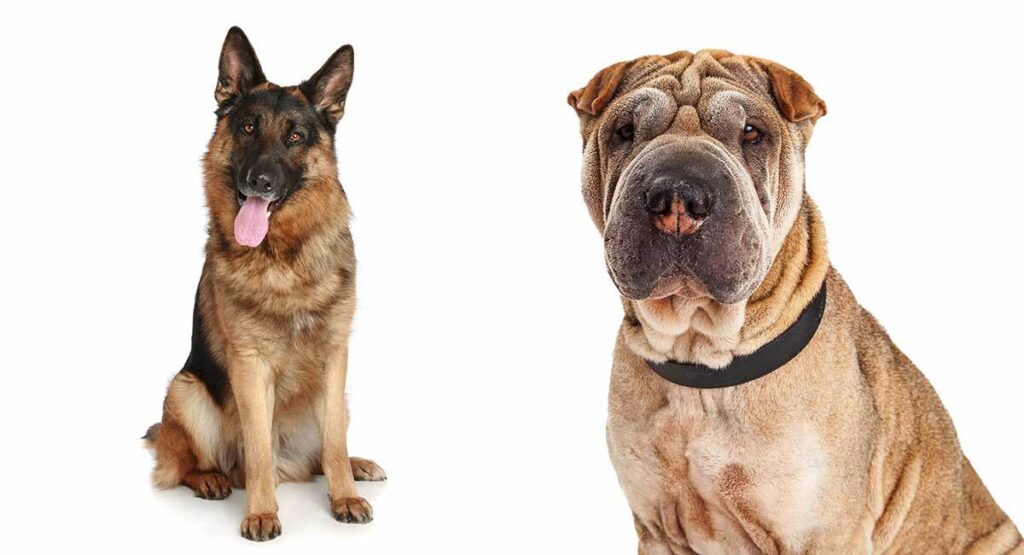
The Shar Pei is a breed that suffers from a number of health issues. Some of these, such as the skin problems caused by excessive wrinkling, may be reduced in the German Shepherd Shar Pei mix
This is another mix where two guarding breeds are brought together and plenty of care needs to be taken with socialization if you are buying a puppy. Your hybrid will likely be quite a large dog that will need plenty of exercise and obedience training.
3. German Shepherd Bichon Frise Mix
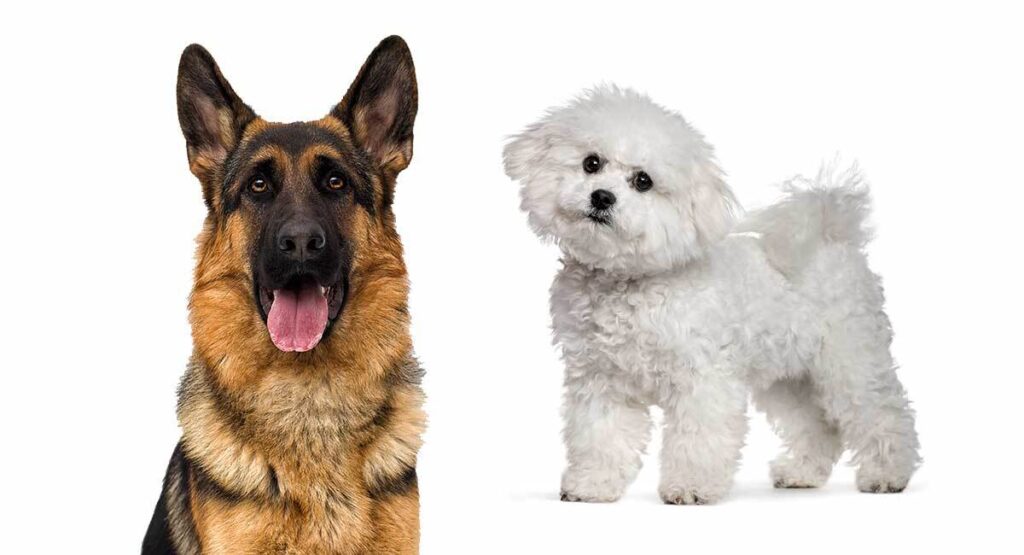
The German Shepherd and Bichon Frise parents are quite different dogs, so their offspring will usually be very unpredictable. The one thing that is pretty much guaranteed is the fluffiness of your dog. They’ll need plenty of grooming, and will usually have a long coat.
Bichons are much smaller than GSDs, so the size of this breed will really vary. As long as they are socialized well, this mix will be a good family pet.
4. German Shepherd Maltese Mix
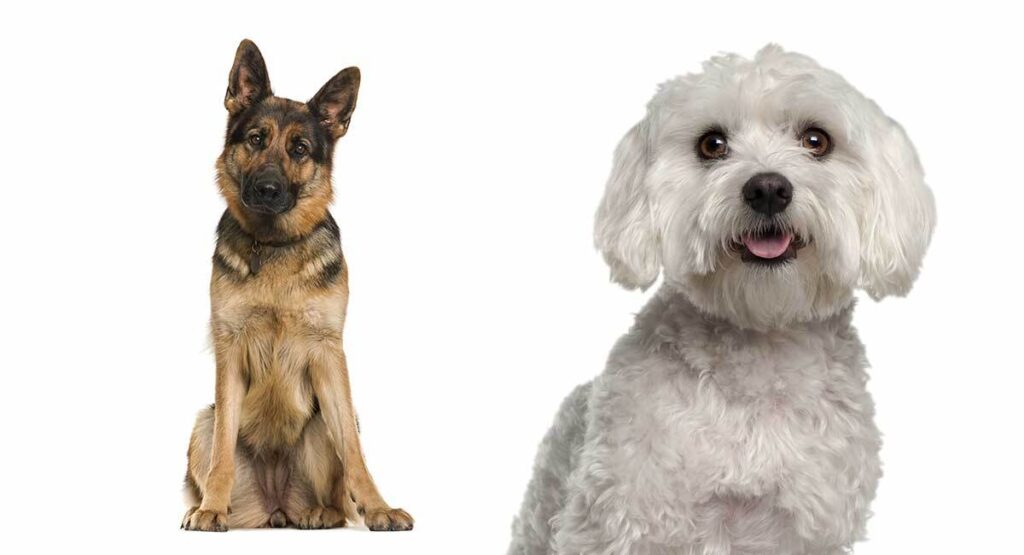
Similarly to the previous cross, this combination can result in some very different puppies, depending on which breed they take after. Breeding a GSD with a Maltese is no easy task either, because of their extreme different sizes.
Generally, this mix will make a good family dog if it is trained and socialized well. But, its coat, temperament, and general appearance will be hard to predict until you see your puppy in person.
5. German Shepherd Saluki Mix
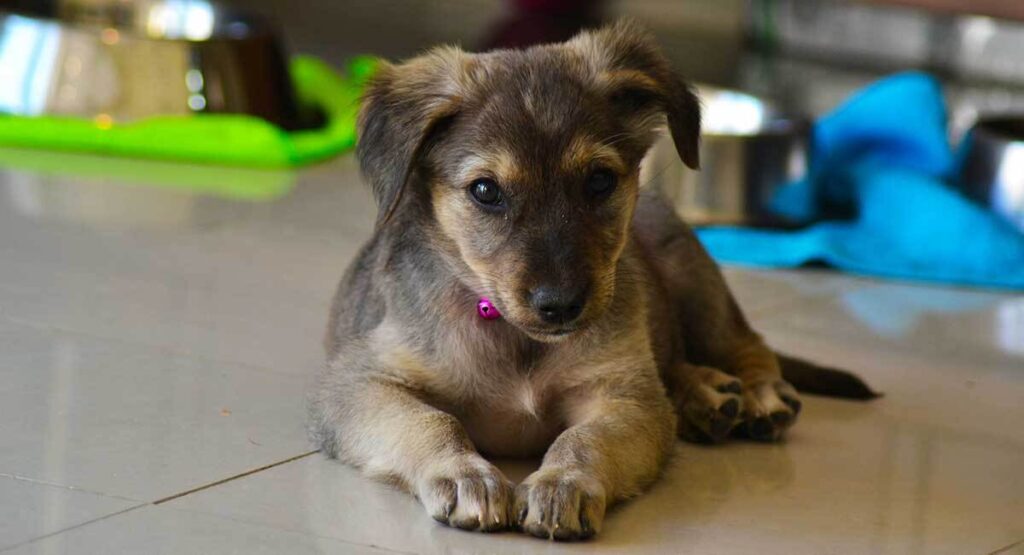
Haven’t heard of a German Shepherd Saluki mix before? You aren’t alone! This is definitely one of the most uncommon mixes on our list.
Salukis are lean, strong dogs. So, your mix may have the more slender appearance of this parent breed. No matter which breed your puppy takes after, they will need plenty of exercise, socialization, and mental stimulation.
6. German Shepherd Coyote Mix
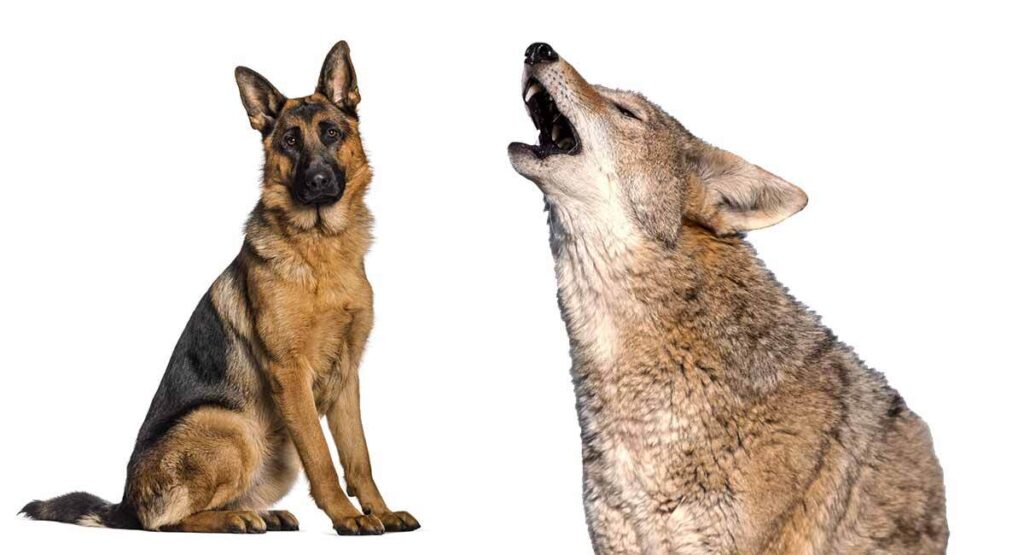
The German Shepherd Coyote mix is probably the least common mixed breed on our list today. This is partly because it involves mixing a domestic German Shepherd dog with a coyote. As you can imagine, results can be quite unpredictable.
Although these two species are quite closely related, there is no guarantee that their temperament will be closer to the GSD parent than the coyote parent. These dogs will potentially be aggressive with guarding tendencies and strong natural instincts. This is a hard mix to find, and not one for a novice owner.
Designer Dog Health
Although factors like small gene pools are improved by making hybrid dogs, it doesn’t remove the risk of health problems completely. Mix breeds are all potentially prone to the same genetic health conditions as either of their parents.
Your puppy should have parents that are health tested for any genetic conditions relating to their purebred lines. So that means that the German Shepherd parent should have good hips, elbows, clear eyes and a nice straight back. They shouldn’t walk on their hocks or have a limping or swaying gait.
A good breeder will be happy to show you evidence of the health certification for both parent dogs.
German Shepherd Mix Puppies
When choosing a puppy, make sure that both parents appearance, health and temperament appeal to you. As a puppy could have a mixture of both traits, or be largely more like one than the other.
Only choose a mixed breed which is a relatively healthy conformation. This means avoid flat faced or long backed dogs, or those with very short legs caused by a dwarfism gene. This will help increase the odds your puppy will grow up into a comfortable, healthy dog.
No matter which one of these mixes you choose, always make sure any first cross puppy is from health tested parents. Some of these hybrids are more common than others, so you may struggle to find some of the rarer ones.
Don’t forget to check out your local rescue and your local animal shelters where many mix breed dogs are waiting patiently for loving homes.

Mike says
Hello! Loved your article. Do you have any idea what the mix is for the dog at the very top of the story? I spent about 14 years with a girl who looked exactly like that! I would love to know.
Jai says
How would I get a mixed breed dog in central Georgia at a low cost?
Scott says
I bought a small ten week old puppy not knowing it was a Shollie.. I hadn’t planned on getting a big dog but Now at nine months I feel like the luckiest man around.. A few repetitions is enough to have him knowing the command and as far as a companion goes he is about as good sad I could have hoped for .. Now At nine months he has progressed from wetting inside, chewing things and barking.. I am so grateful to have stumbled across my Shollie and frankly he is the brains of this outfit
Gretchen LaBell says
We believe we have a GSD/Flat-coated retriever. We bought her for $20 from a very young couple. They told us GSD/lab…but she is jet black with long feathered fur. Hence our belief she’s part flat-costed retriever. We have seen full bred flat coats, and she is almost identical to them but her physique is different.
Klesa says
Hi! We are thinking about getting a puppy of the same mix, could you share about your dogs temperament?
Milind Correa says
We have a one year old German Shepherd Pomeranian Mix & she’s quite thin. Often she has digestive issues. Is this normal for a one year old German Shepherd Pomeranian Mix? Also what is this mix breed called? Pomherd, Sheparanian, etc???
Olympia says
Hello,
We rescued a 13 months old sweet dog from a high kill shelter,and we are hearing many different mixed breed he can be.
He can be Akita and Shepherd. Or a Skiper key mixed with Shepherd.
Any suggestions how to find out what breed is?
I like to compliment you ,that your article/website it’s well done and very informative.